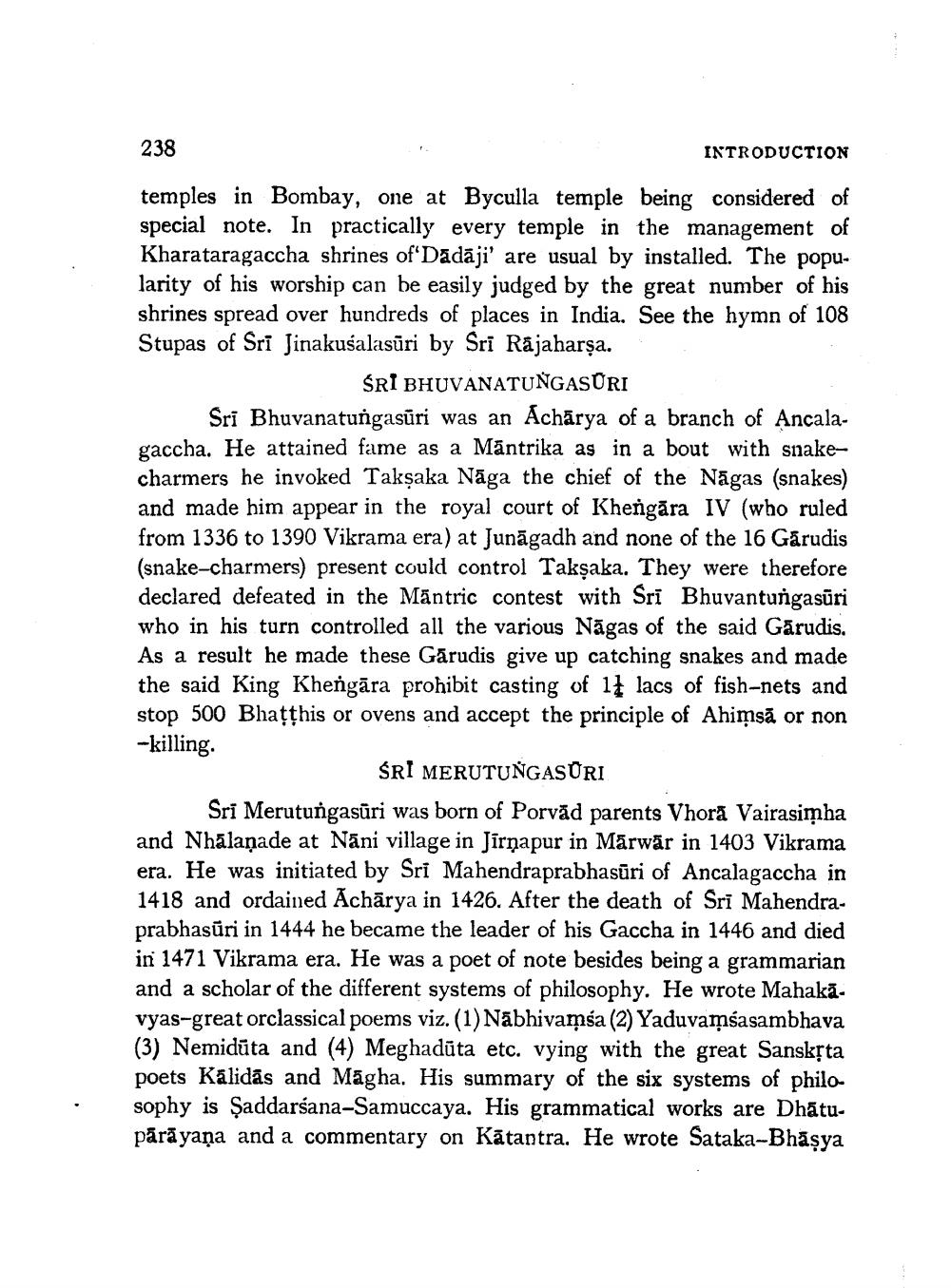________________
238
INTRODUCTION
temples in Bombay, one at Byculla temple being considered of special note. In practically every temple in the management of Kharataragaccha shrines of Dādāji' are usual by installed. The popularity of his worship can be easily judged by the great number of his shrines spread over hundreds of places in India. See the hymn of 108 Stupas of Sri Jinakusalasūri by Sri Rajaharsa.
ŚRI BHUVANATUNGASORI Sri Bhuvanatungasūri was an Acharya of a branch of Ancalagaccha. He attained fame as a Mántrika as in a bout with snakecharmers he invoked Takşaka Nāga the chief of the Nāgas (snakes) and made him appear in the royal court of Khengāra IV (who ruled from 1336 to 1390 Vikrama era) at Junāgadh and none of the 16 Garudis (snake-charmers) present could control Taksaka. They were therefore declared defeated in the Māntric contest with Sri Bhuvantungasūri who in his turn controlled all the various Nāgas of the said Garudis. As a result he made these Gārudis give up catching snakes and made the said King Khengāra prohibit casting of 12 lacs of fish-nets and stop 500 Bhatthis or ovens and accept the principle of Ahimsā or non -killing
SRI MERUTUNGASURI
Sri Merutungasūri was born of Porvād parents Vhora Vairasimha and Nhālasade at Nāni village in Jirnapur in Mārwär in 1403 Vikrama era. He was initiated by Sri Mahendraprabhasūri of Ancalagaccha in 1418 and ordained Achārya in 1426. After the death of Sri Mahendraprabhasūri in 1444 he became the leader of his Gaccha in 1446 and died in 1471 Vikrama era. He was a poet of note besides being a grammarian and a scholar of the different systems of philosophy. He wrote Mahakā. vyas-great orclassical poems viz. (1) Nabhivamsa (2) Yaduvamsasambhava (3) Nemidūta and (4) Meghadūta etc. vying with the great Sansksta poets Kalidās and Mágha. His summary of the six systems of philo sophy is Şaddarśana-Samuccaya. His grammatical works are Dhātupārāyaṇa and a commentary on Kātantra. He wrote Sataka-Bhasya




